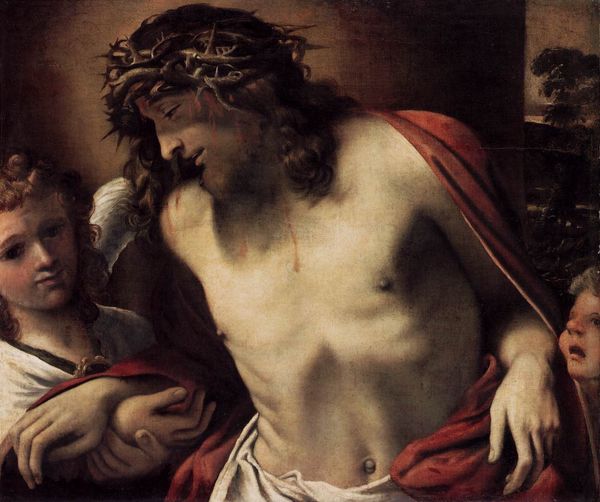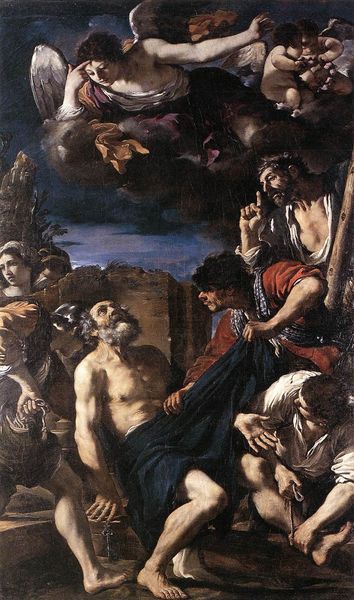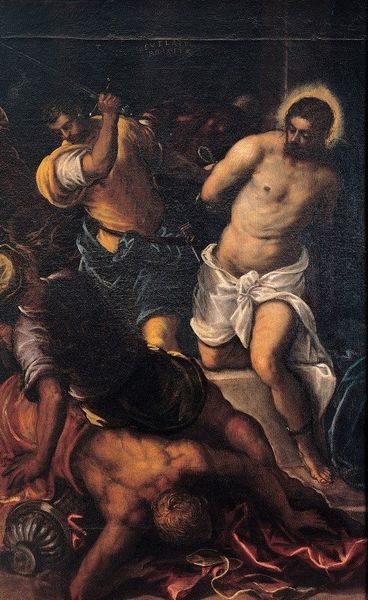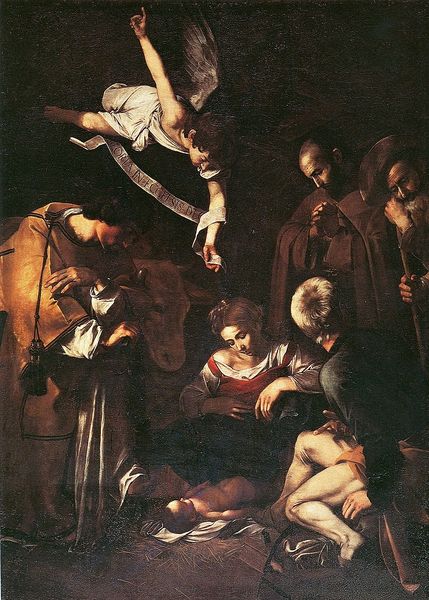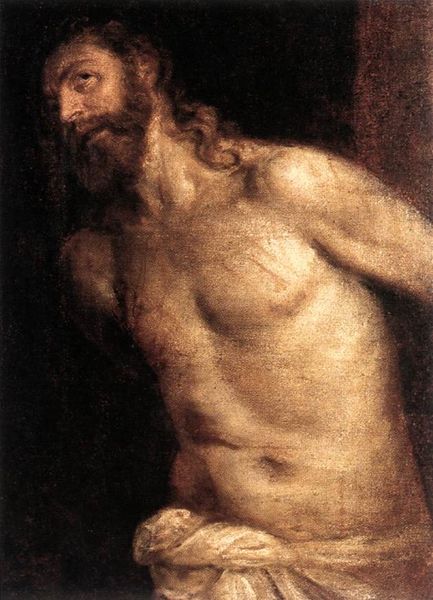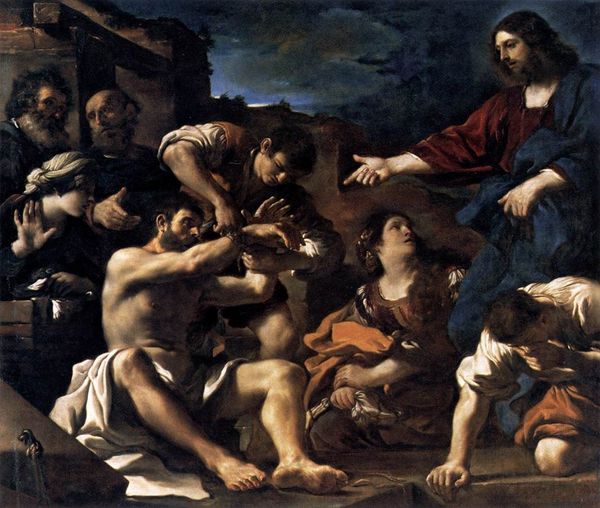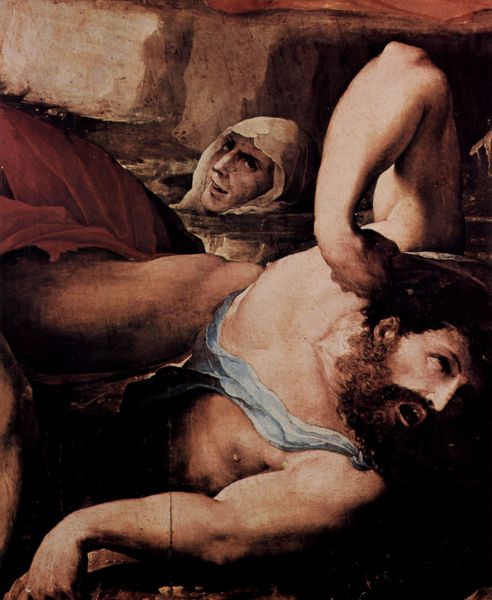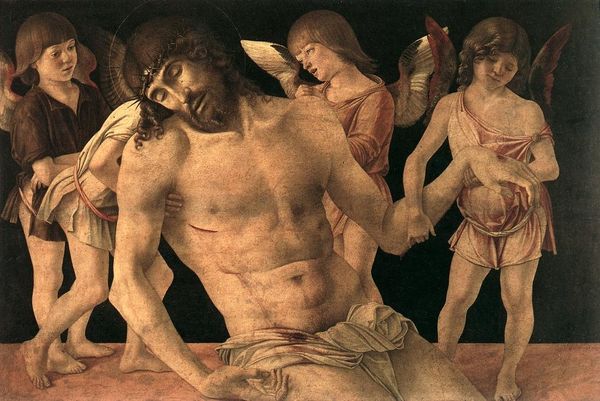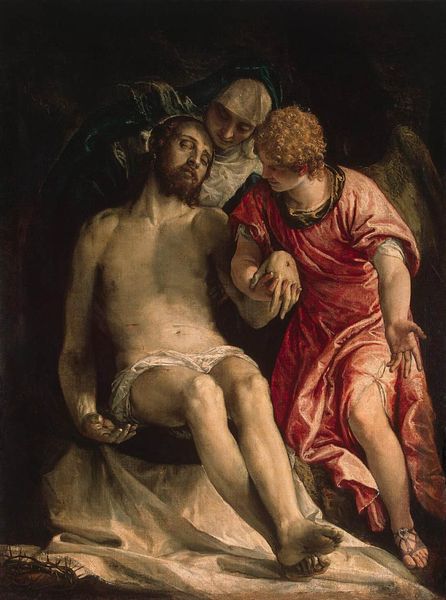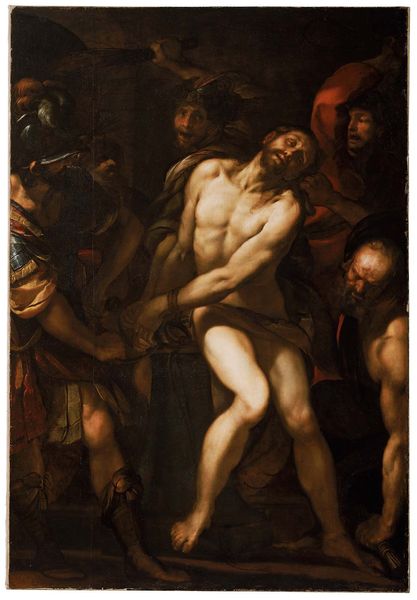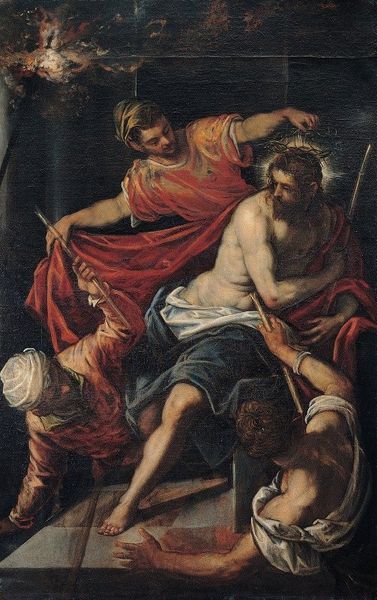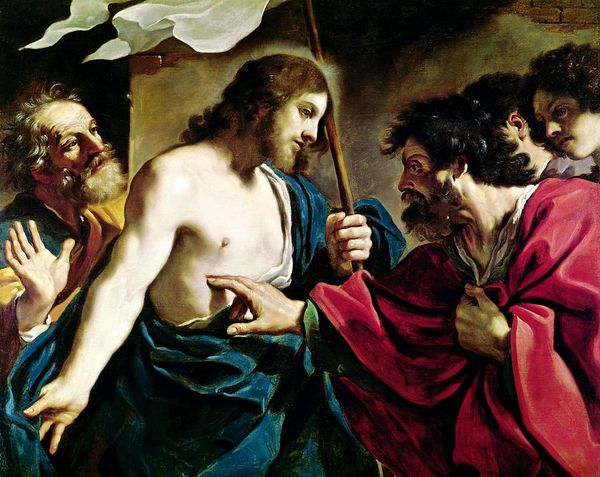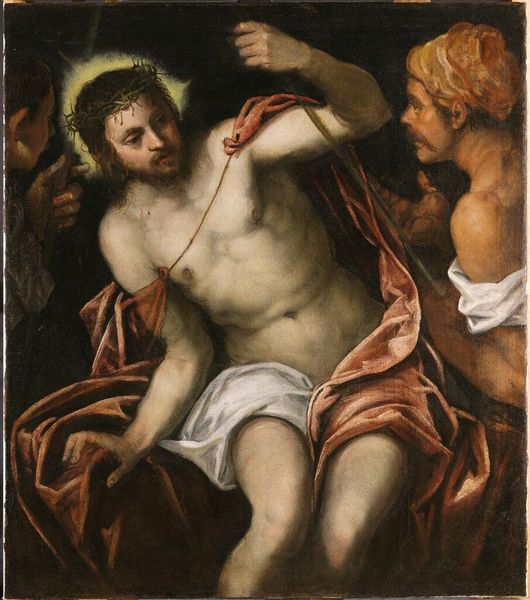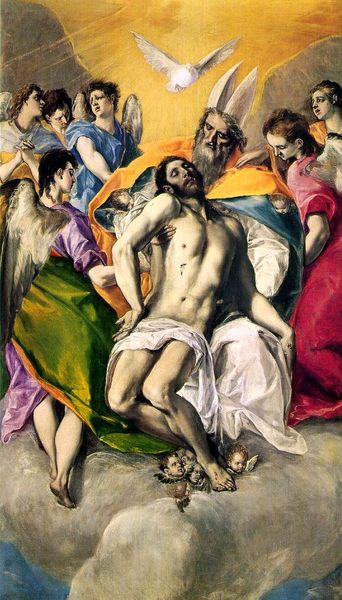
#
portrait
#
baroque
#
oil painting
#
portrait head and shoulder
#
history-painting
#
facial portrait
#
portrait art
Copyright: Public domain
Editor: We’re looking at Guercino's painting, "Doubting Thomas." It's an oil painting depicting the biblical scene, currently housed at the Residenzgalerie in Salzburg. I’m immediately struck by how intimate and raw the scene feels, especially considering its historical context. What social or political dialogues do you think this painting engages with? Curator: This depiction transcends a simple bible story. It brings forth themes of power and knowledge in marginalized communities and intersectional systems. The act of touching, of physical proof, speaks volumes when situated within societies that often dismiss lived experiences of oppressed peoples. This doubt, is it a personal failing, or is it a symptom of systemic disbelief in certain voices? How might we read this act of "seeing is believing" through a lens of privilege and access? Editor: So, you’re suggesting that Thomas's doubt isn't just about faith, but also about who gets to determine truth? Curator: Precisely! The painting prompts us to question: Whose experiences are automatically validated? Whose require "proof?" Consider the ways marginalized bodies, particularly Black and Indigenous women, have historically been disbelieved when reporting abuse or violence. This work, created in the Baroque period, can speak to our current moment. Does understanding its social context transform your perception? Editor: Absolutely, it adds layers I hadn't considered. It transforms the act of doubting from a purely religious concern into a question of power, access, and the burden of proof placed on marginalized individuals. Curator: It makes us think about the gaze, about the construction of narratives, about who gets to write history, or even just their own story. What do we, as viewers, bring to this painting? How can it challenge our own assumptions and privileges? Editor: I guess seeing is never just believing, is it? It's about understanding the power dynamics inherent in who gets seen, who gets believed, and what constitutes "proof". Curator: Indeed. It transforms the painting from a depiction of a biblical scene into an intersectional examination of social injustices, prompting reflection and encouraging critical analysis.
Comments
No comments
Be the first to comment and join the conversation on the ultimate creative platform.
